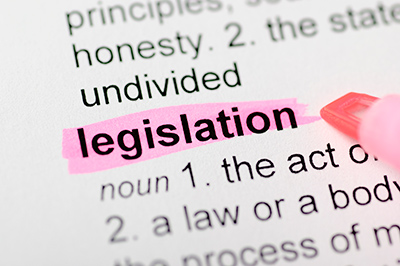
You may be thinking: I’m getting messages from ABMP about bills being considered by lawmakers, but that government class from years ago is foggy in my head; I need a refresher. You are not alone! We’re here with a big picture view of how laws are created, broken down into four steps:
1. Bills are legislative ideas. Some bills are brought by legislators, others are drafted by boards or citizens and a legislator sponsors them. Legislators sponsor bills and introduce them to the state legislature during the legislative session. Bills/legislation are basically ideas that become law once the governor signs the bill. Bills can be either a brand new idea (e.g. licensing laws) or they amend existing laws.
Did you know: Legislative sessions vary by state; some run for only a few weeks every other year, some run for the first six months of the year, and others for the entire year.
2. Once bills are introduced on the floor of a chamber (House/Assembly or Senate), they are assigned to a legislative committee for analysis and voting. Committee is your opportunity to testify in favor of the bill, suggest amendments to the bill, or oppose the bill.
Did you know: You can track the progress of bills on your state’s legislative website and, in some cases, set up alerts to get email updates.
3. If the bill passes through the first committee, it goes to the floor of the chamber for a second reading (where there might be further debate among legislators or potentially referred to a second committee hearing and public comment period). The final vote in the first chamber is the third reading. If it passes through the third reading, it typically goes to the second chamber and is assigned to a committee for analysis and voting in the same manner as step 2. Some states pass bills after going through one chamber, but that is uncommon. Only one state is unicameral (only one chamber): Nebraska.
4. If the bill makes it through both chambers, it goes to the governor for signature. Once a governor signs a bill, it becomes law.
Follow ABMP email alerts and blogs to stay up to date on bills that impact your profession and reach out to ABMP’s Government Relations Team at gr@abmp.com.
If you liked this blog or want to learn about how to influence lawmaking, check out this blog: "How to Influence Lawmaking"